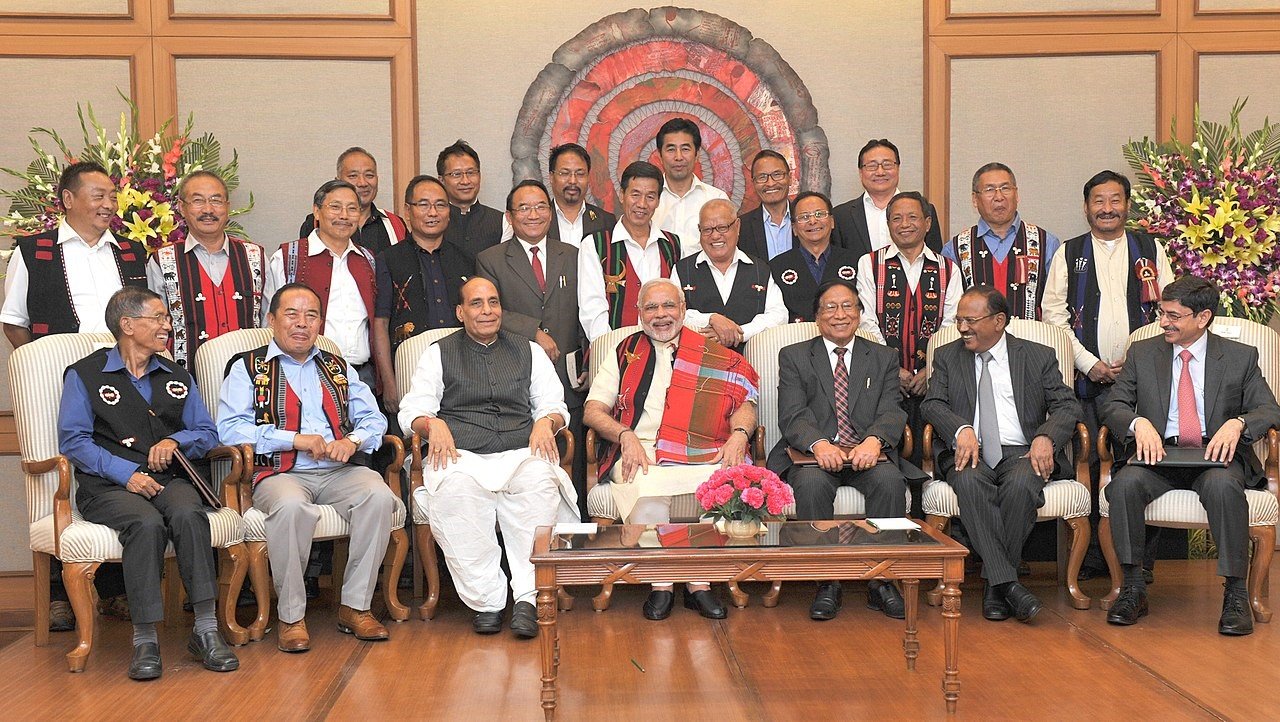The Naga public is today clueless about where the peace process is going, except for the fact that it has reached a deadlock, purportedly over the issue of flag and constitution.
Even after 26 years since entering into ceasefire and dialogue, there is no sign of a solution. The lack of transparency in the long-drawn peace process has been creating doubts in people’s minds. Added to this is the lack of serious political initiative to break the current stalemate.
While one may argue that political negotiations are complex and require patience, it is perhaps time to ask some hard questions about the Naga peace process and demand accountability.
After coming to power, Prime Minister Narendra Modi was credited with ‘personally supervising the talks’ with an Interlocutor reporting directly to the PMO. The Framework Agreement of 2015 was also publicized as a big achievement of the Modi Govt.
But is there a political will to resolve the Naga issue?
During the previous Congress-led UPA govt, the top Naga leaders held face-to-face meetings with the then Prime Minister and Union Home Minister. A senior Union Cabinet Minister along with a Group of Ministers was appointed to supervise the talks then.
Unfortunately, today, the Naga Political Groups (NPGs) have no access to the Prime Minister or even the Home Minister. There is also no longer the practice of having a dedicated interlocutor for the Naga peace process. The negotiation (though claimed to have concluded in Oct 2019) has also been downgraded to the level of a retired bureaucrat who is an Advisor (North East) at the Ministry of Home Affairs (MHA).
It appears that the negotiating parties, here the Govt of India and NSCN (IM), are simply satisfied with the status-quo and not willing to consider a give and take approach. It is about time to deliberate whether ceasefire extension year after year has any meaning when there is no progress and conclusion in the peace talks.
Is the indefinite extension of the ceasefire helping find a solution? In 2007 when the GoI-NSCN (IM) decided to extend the ceasefire indefinitely, it was understood that this would be subject to progress of peace talks between the two sides to find a negotiated settlement.
To reassure the Naga people, a public statement on the current status of the peace process is the least that is expected from the negotiators. The GoI and NPGs have a responsibility to inform the people on where the peace process stands today as well as the key issues that remain unresolved and how they intend to settle them.
A fresh political momentum at the highest-level on the basis of a give and take approach is required to resolve the deadlock and work towards an early solution as desired by the Naga masses.
Issued in public interest by The Naga Rising


